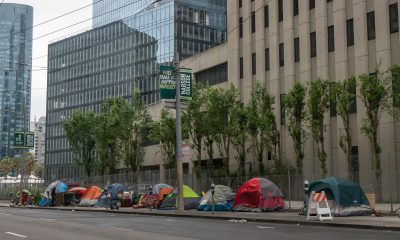Art
Thornton Dial: A Visionary Artist Ahead of His Time
Thornton Dial, a pioneering American artist, left an indelible mark on the art world with his expressive and monumental works. Born on Sept. 10, 1928, in Emelle, Alabama, Dial’s artistic journey began in the late 1980s when he gained prominence for his assemblages of found materials, executed on a grand scale.
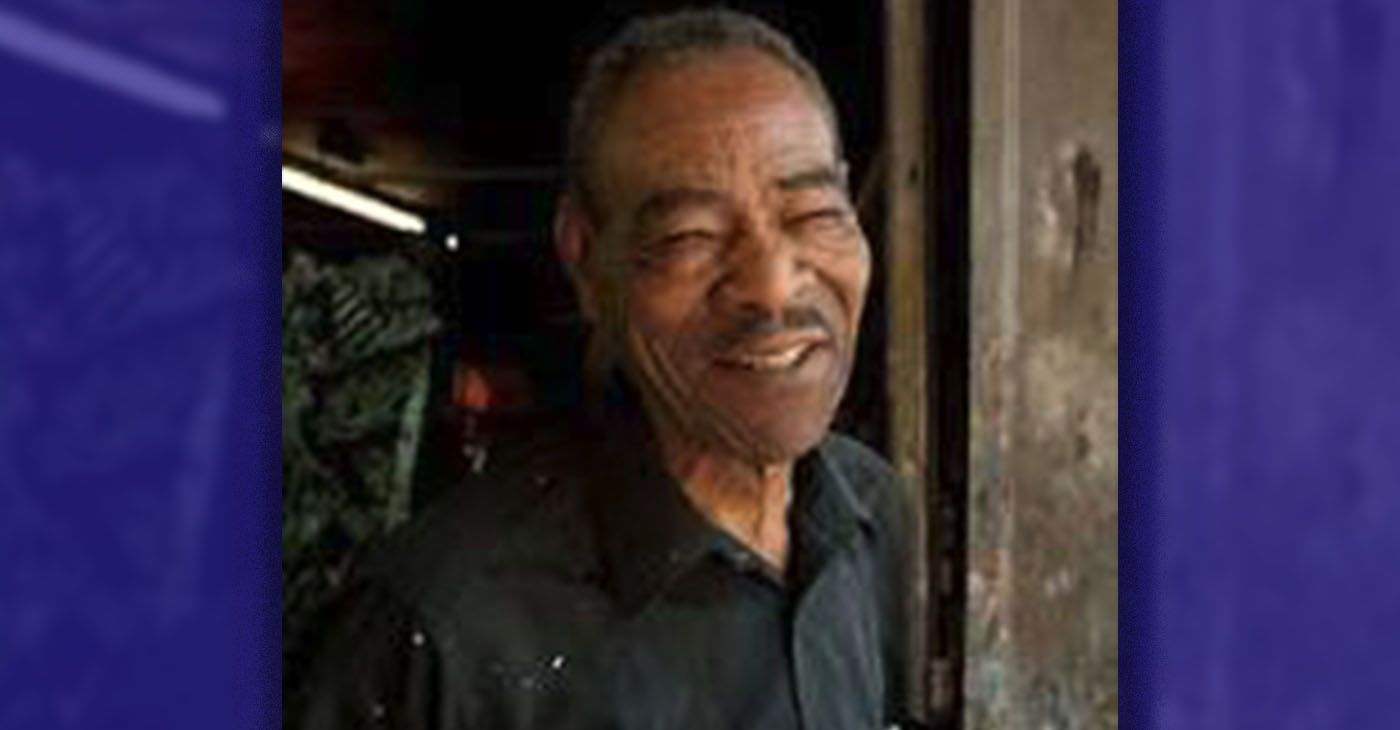
By Tamara Shiloh
Thornton Dial, a pioneering American artist, left an indelible mark on the art world with his expressive and monumental works. Born on Sept. 10, 1928, in Emelle, Alabama, Dial’s artistic journey began in the late 1980s when he gained prominence for his assemblages of found materials, executed on a grand scale. His works encompass a wide range of subjects, from human rights to natural disasters and current events, reflecting a deep engagement with history and social issues.
Growing up in poverty on a former cotton plantation, Dial was raised by his teenage mother, Mattie Bell. It was his time spent with his second cousin, Buddy Jake Dial, a farmer and sculptor, that ignited his passion for art. Dial’s early experiences of witnessing the art created from everyday objects in people’s yards during his move to Bessemer, Alabama, fascinated him and instilled in him a deep appreciation for craft and creativity.
For many years, Dial worked as a metalworker at the Pullman Standard Plant in Bessemer, Alabama, until its closure in 1981. It was after this that he dedicated himself to his art, creating works for his own pleasure and self-expression.
He encountered Lonnie Holley, an artist who introduced Dial to Atlanta collector and art historian William Arnett. Arnett played a pivotal role in bringing Dial’s work to national prominence, along with other African American vernacular artists, through his efforts as an art historian and the founder of the Souls Grown Deep Foundation.
Dial’s work gained recognition in major cultural institutions and exhibitions, including the 2000 Whitney Biennial. His art resonated with viewers, addressing American sociopolitical issues such as war, racism, bigotry, and homelessness.
Through his assemblages, Dial incorporated a wide array of found materials, creating layered and textured compositions. His use of objects like bones, rope, and scrap metal added depth and symbolism to his works, reflecting the history and struggles of the rural South.
The tiger motif became a prominent symbol in Dial’s art, representing survival and the struggle for civil rights in the United States. Over time, Dial’s work began to be acknowledged as “first-rate, powerful Art” by critics such as Karen Wilkin of The Wall Street Journal. Dial’s unique artistic vision and his ability to merge materials into captivating and meaningful compositions led to his recognition as a contemporary artist.
Dial’s work can be found in notable collections worldwide, including the Metropolitan Museum of Art, where ten of his works were acquired in 2014. He passed away in 2016, but his legacy lives on, inspiring artists and viewers alike to explore the transformative power of art.
Thornton Dial’s contributions to the art world, his commitment to expressing social issues, and his ability to create captivating compositions from found materials cement his position as a visionary artist ahead of his time.
Source: https://www.blackpast.org/african-american-history/dial-thornton-1928-2016/
https://en.wikipedia.org/wiki/Thornton_Dial
Image:
By copyright Jerry Siegel – Original publication: Garden & GunImmediate source: http://gardenandgun.com/article/thornton-dial, Fair use, https://en.wikipedia.org/w/index.php?curid=49514861
Art
Augusta Savage: A Sculptor, Activist and Renaissance Woman
Augusta Savage was a prominent sculptor and activist of the Harlem Renaissance, known for her artistic talent and dedication to encouraging and supporting African American artists.
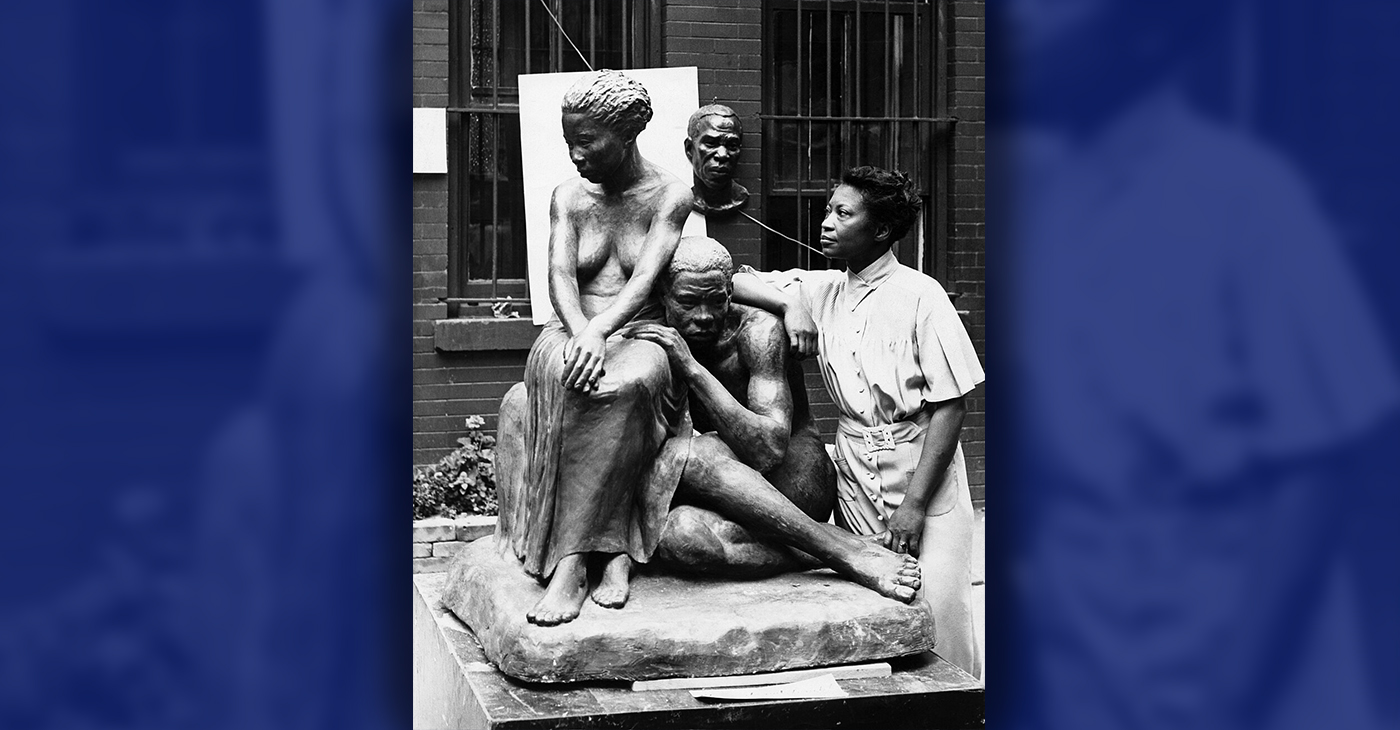
By Tamara Shiloh
Augusta Savage was a prominent sculptor and activist of the Harlem Renaissance, known for her artistic talent and dedication to encouraging and supporting African American artists.
Augusta Christine Fells was born on Feb. 29, 1892, in Green Cove Springs, Fla. She later took the name of her second husband as her
Savage began sculpting as a child using natural clay found near her home. Her father, a Methodist minister, didn’t approve of her sculpting and did whatever he could to stop her. She once said that her father “almost whipped all the art out of me.” Despite her father’s objections, she continued to make sculptures.
When the family moved to West Palm Beach, Fla., in 1915, she encountered a new challenge: a lack of clay. She eventually got some materials from a local potter and created a group of figures that she entered in a local county fair. Her work was well received, winning a prize and along the way the support of the fair’s superintendent, George Graham Currie. He encouraged her to study art despite the racism she encountered.
In the 1920s, Savage moved to New York City, where she attended Cooper Union, a prestigious art school that provided free tuition. She excelled there, completing her studies ahead of time and receiving scholarships for living expenses. Despite being rejected for a summer program in France because of her race, she persevered, using the incident to highlight discrimination. She gained recognition during the Harlem Renaissance, creating sculptures of prominent African Americans, including W. E. B. Du Bois and Marcus Garvey.
In 1929, Savage received a Julius Rosenwald fellowship, which enabled her to study in Paris, where she exhibited her work at the Grand Palais, a famous exhibition hall and museum in the French capital.
When she returned to the U.S. during the Great Depression, Savage turned to teaching and founded the Savage Studio of Arts and Crafts, mentoring young artists like Jacob Lawrence and Norman Lewis. She played an active role in the Harlem Artists’ Guild and worked with the Works Projects Administration (WPA) to support struggling artists.
One of Savage’s most celebrated works was The Harp, created for the 1939 New York World’s Fair. Inspired by James Weldon Johnson’s poem “Lift Every Voice and Sing,” the monumental sculpture depicted twelve African American youth as the strings of a harp. Although it was highly acclaimed, The Harp was destroyed after the fair ended.
In her later years, Savage retreated to a quieter life in Saugerties, New York, teaching children and creating art as a hobby. She was married three times and had one child, Irene.
Savage passed away on March 26, 1962, in New York City after battling cancer. Although she was nearly forgotten at the time of her death, today Savage is recognized as a pioneering artist, educator, and advocate for African American art and artists.
Art
Phenomenal Woman’ Maya Angelou Monument Unveiled at San Francisco Main Library
In a joyful community celebration attended by over 200 people, including Mayor London Breed, the highly anticipated ‘Portrait of a Phenomenal Woman’ monument to Dr. Maya Angelou was unveiled at the San Francisco Main Library on Sept. 19. Oakland-based artist Lava Thomas created the 9-foot bronze and stone monument in the form of a book featuring a portrait and quotes from the celebrated author, poet, civil rights activist and former San Francisco resident.

By Linda Parker Pennington
In a joyful community celebration attended by over 200 people, including Mayor London Breed, the highly anticipated ‘Portrait of a Phenomenal Woman’ monument to Dr. Maya Angelou was unveiled at the San Francisco Main Library on Sept. 19.
Oakland-based artist Lava Thomas created the 9-foot bronze and stone monument in the form of a book featuring a portrait and quotes from the celebrated author, poet, civil rights activist and former San Francisco resident.
The work was commissioned by the San Francisco Arts Commission in response to legislation passed in 2018 by San Francisco’s Board of Supervisors, requiring at least 30% female representation in the public realm.
Attending the unveiling were Angelou’s grandson, Elliott Jones, social advocate, philanthropist, and board member of the Dr. Maya Angelou Foundation; and Rosa Johnson, Angelou’s niece and family archivist, who spoke about the historic unveiling of this first public monument portraying a Black woman in San Francisco’s history.
Art
Community Struggles for City of Berkeley to Honor to Commitment to Black Rep Theater
Berkeley’s Black Repertory Group (BBRG), the only Black-owned-and-operated theater in the East Bay, is pushing for the City of Berkeley to provide the financial backing for the theater that is required by local law. At issue is whether the City of Berkeley will contribute legally required funding to support Black theater, similar to what the city does for other performing arts and cultural institutions in the city or whether it will continue to promote gentrification and forced displacement through longtime practices that undermine this historic venue. Founded in 1964, the theater is located at 3201 Adeline St. in Berkeley, a cultural arts center that houses the Birel L. Vaughn Theater.

Special to the Berkeley Post
Berkeley’s Black Repertory Group (BBRG), the only Black-owned-and-operated theater in the East Bay, is pushing for the City of Berkeley to provide the financial backing for the theater that is required by local law.
At issue is whether the City of Berkeley will contribute legally required funding to support Black theater, similar to what the city does for other performing arts and cultural institutions in the city or whether it will continue to promote gentrification and forced displacement through longtime practices that undermine this historic venue.
Founded in 1964, the theater is located at 3201 Adeline St. in Berkeley, a cultural arts center that houses the Birel L. Vaughn Theater.
“We not asking for handouts. The city should just pay what it legally owes us and also stop using city officials to harass us,” said a member of the board of the Black Rep.
Former Councilmember Cheryl Davila forcefully argues that Berkeley officials are undermining the theater as part of the city’s continued gentrification and ongoing elimination of local institutions and neighborhoods of African Americans and other People of Color.
“The City of Berkeley has continued the colonization as reflected in disparities documented in the Health Status Report, the Center for Police Equity (CPE) Report and Mason Tillman Report,” Davila said.
“The Tillman report revealed bids are awarded to white men only,” she continued. “The CPE report demonstrated the bias in policing and the Health Status Report, health disparities due to racism. The (city) has not fairly distributed funding or support for organizations that are located within the red lines.
“Redline disinvestment has been the practice in the Black, indigenous, or People of Color (BIPOC) institutions in the City of Berkeley. It’s crystal clear, the city, which has invested in Caucasian institutions, outside the red lines, providing emergency and other funding passed on the consent calendar with no opposition, nor illegal break-ins for building inspections, or harassment, unlike the Black Repertory Group,” she said.
“Now, these same redlined communities are recognized as “prime” real estate, so the fines, inspections, and eviction process began some time ago and continues to eliminate “Blacks” from our communities. The attempts to confiscate the historical institutions that were never given the full support to live and thrive in a city (that upholds) a façade of being “progressive.”
Dr. Omowale Fowles, a former Berkeley health commissioner, said: “Today, in the 21st century post-Jim Crow America, a so-called ‘progressive’ Berkeley City Council has continued to perpetuate the unfair, unjust and inequitable funding practice that drove the Black Repertory Theater out of the South!
“Berkeley has not lived up to its contractual agreements to provide an annual baseline of economic support for the BBRG, nor has the city responded, in a timely manner, if at all, to BBRG’s requests for consistent maintenance sanitation, and renovations interventions,” said Fowles.
However, the Berkeley City Council has managed to award several other theaters in Berkeley tens of thousands of dollars to enable their theaters to stay alive and thrive, specifically, the Berkeley Repertory Theater in downtown and the Shotgun Players’ Theater is South Berkeley, he said.
“Such malevolent behaviors (are what we have come to expect) from a government entity that prides itself on its quasi-liberal and progressive beliefs particularly toward the arts music heritage of Berkeley,” he said.
Lady AfiTiombe A. Kambon, a longtime Berkeleyan elder who is an oral historian and actor, traced the roots of the Black Rep to historic resistance to violent racism and the KKK.
“The Berkeley Black Repertory Group Theater (BBRG) escaped Vicksburg, Mississippi, from the Ku Klux Klan (KKK) for holding artistic storytelling events for Black people in the 1940s. The Black Rep fled from hatred and the threat of lynching to a city known to practice humanity and democracy,” she said.
“Now, the theater continues to be under attack from city officials and Neighborhood Watch organized to eliminate the Black community,” Kambon said.
The Berkeley Equity Summit Alliance urges all Citizens throughout the City of Berkeley and beyond to support the Black Repertory Group and ensure that the City of Berkeley treats all the theaters equally and equitably distributing services and funding.
For more information, reach out to tiombe47@gmail.com or Dallascowboy52@yahoo.com
@PaulCobbOakland @PostNewsGroup @NNPA_BlackPress @BlackPressUSA
-

 Activism4 weeks ago
Activism4 weeks agoOakland Post: Week of September 18 – 24, 2024
-

 Activism3 weeks ago
Activism3 weeks agoOakland Post: Week of September 25 – October 1, 2024
-

 Activism3 weeks ago
Activism3 weeks ago‘Respect Our Vote’ Mass Meeting Rejects Oakland, Alameda County Recalls
-

 California Black Media2 weeks ago
California Black Media2 weeks agoStudy: UC 4-Year Grad Rate Doubles That of CSU
-
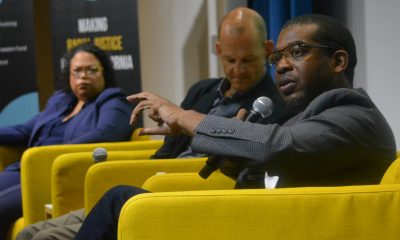
 Bay Area2 weeks ago
Bay Area2 weeks agoState of Black California: Oakland Tour Stop Rescheduled
-
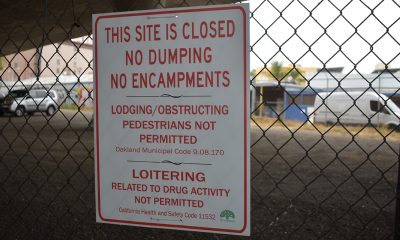
 Bay Area2 weeks ago
Bay Area2 weeks agoMayor Sheng Thao Issues Executive Order to Shut Down Homeless Encampments
-

 Alameda County2 weeks ago
Alameda County2 weeks agoAlameda County Democratic Party Opposes the Recall of Mayor Sheng Thao
-

 Bay Area2 weeks ago
Bay Area2 weeks agoFormer Mayor Willie L. Brown Endorses Dana Lang for BART Board District 7








